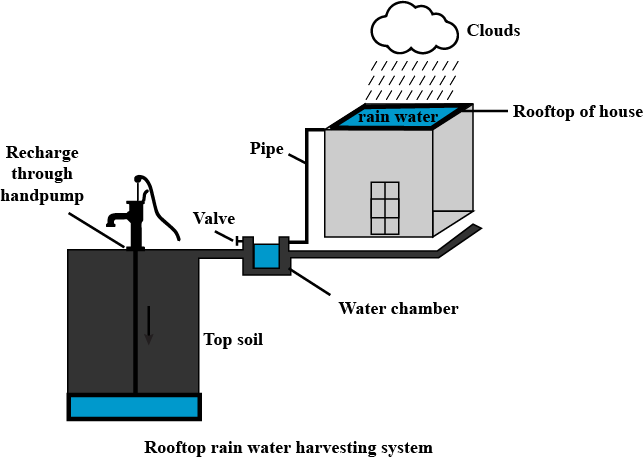Roof top water harvesting method
- In this method, rainwater collected from the roof of the building is diverted to a storage tank. The storage tank has to be designed according to the water requirements, rainfall, and catchment availability.
- Each drainpipe should have a mesh filter at the mouth and first flush device followed by a filtration system before connecting to the storage tank. Each tank should have an excess water overflow system.
- Excess water could be diverted to the recharge system. Water from storage tanks can be used for secondary purposes such as washing and gardening etc. This is the most cost-effective way of rainwater harvesting.

Components of roof top water harvesting method
1. Catchment
The surface that receives rainfall directly is the catchment of rainwater harvesting system. It may be a terrace, courtyard, or paved or unpaved open ground.
2. Down pipe and first flush arrangement
This is an arrangement to prevent the dust and other unwanted materials that may be seen on the roof, from reaching the storage tank.
3. Filter Unit
Filters are used for the treatment of water to effectively remove turbidity, color, and microorganisms. After the first flushing of rainfall, water should pass through filters. It removes silt, dust, leaves, and other organic matter from entering the storage tank. The filter media should be cleaned daily after every rainfall event.
4. Storage tank
It store the raining water coming from roof top. There are 3 type of storage tank.
a) Above ground tank
b) Underground tank
c) Sub surface tank
